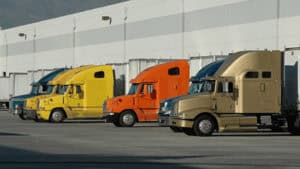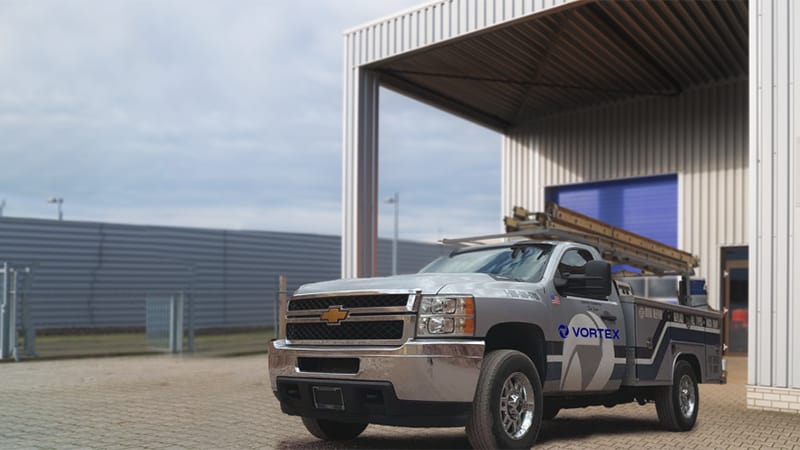What to Consider When Setting Up Your Loading Dock
 Loading docks manage the flow of goods in and out of your business. Poorly designed docks create bottlenecks and endanger staff. Well designed docks, on the other hand, are not only safe, but improve output. For businesses looking for ways to streamline shipping and receiving, here is what to consider when setting up your loading dock.
Loading docks manage the flow of goods in and out of your business. Poorly designed docks create bottlenecks and endanger staff. Well designed docks, on the other hand, are not only safe, but improve output. For businesses looking for ways to streamline shipping and receiving, here is what to consider when setting up your loading dock.
Truck Bed Height
Because shipping trailers are 36-60 inches tall, determining the correct height for your truck bed is not a straightforward choice. Unless your business is served by a captive fleet with only one type of trailer, you need to select a height that will accommodate the trailers you receive most often, while making it possible to accept shipments from companies using ones larger or smaller.
The good news is that truck beds do not have to be one-side-fits all. By installing a dock leveler, you can extend the working range of your dock by 12 inches above or below. For that reason, a truck bed 48 inches high will be able to service every shipping trailer in the country.
Door Width
Obviously, it’s easier to maneuver through a wide door than a narrow one. For that reason, the doors on a loading dock should be at least as big as the trailers they service. (Most shipping trailers are eight feet wide.) Matching the door to the width of the trailer lets crews maneuver freely, but nine foot doors provide greater flexibility because they can accommodate both standard trailers as well as oversize loads.
Door Height
Doors under 8-9 feet high can accommodate most shipments, but don’t permit floor to ceiling loading on all trailers. Ten foot doors, on the other hand, allow for a full range of loading operations. There is no risk of shipments colliding with the door header, so high loads don’t have to be broken down in order to avoid damage.
Staging Area
On every loading dock, crews need room to maneuver, drop products, and prepare shipments. A standard trailer is 53-57 feet long. So, a loading dock needs to be just as big in order to load and unload cargo. However, adding more room increases safety and efficiency, especially if you need to accommodate forklift traffic. That’s why, when setting up your loading dock, it’s recommended you follow the example of large distribution centers and design staging areas at least 75 feet deep.
Dock Levelers
Dock levelers act as a bridge, permitting the steady flow of goods through your loading dock. As noted above, dock levelers can be raised or lowered up to a foot in order to accommodate trailers taller or shorter than your truck bed.
Dock levelers are divided into two categories, based on their method of activation. Though costs vary, each one is suited to a wide range of applications.
- Mechanical. Mechanical dock levelers are spring activated. Operators pull a chain, which releases the mechanism. Once the leveler’s deck has been raised, operators walk it down until the lip is resting on the trailer bed, then lock it in.
- Hydraulic. Hydraulic levelers are activated electronically. Operators press a pressure switch, which raises or lowers the deck to the appropriate height. While hydraulic levelers are more expensive, they are better suited to heavy loads, high usage, and harsh weather.
Dock Bumpers
Even at low speeds, cargo trucks can generate over 300,000 pounds of force. Dock bumpers absorb impact, protecting your loading dock from the serious structural damage that can occur from repeated, low-speed impacts.
The majority of bumpers are made from molded or laminated rubber. However, for businesses that frequently receive heavy shipments, steel-faced bumpers may be a better choice. Though incredibly durable, they will wear down over time, so check them regularly throughout the year. If your bumpers do not project at least four inches from your building, they ought to be replaced.
Dock Seals
Loading docks are more exposed than any other part of your business. Excessive heat and cold put workers at risk, which is why many businesses in harsh climates install dock seals.
Dock seals wrap around trailers parked in your loading dock, effectively turning them into an extension of your climate controlled warehouse. They save energy, protect inventory, and improve efficiency.
Loading docks exposed to wind, rain, and snow have a greater risk of accidents. Not to mention, extreme temperatures endanger workers. On the other hand, shielding workers improves safety and morale, leading ultimately to greater productivity.
Truck Latches
Fall-throughs are one of the most dangerous accidents that can occur on a loading dock. In most cases, they’re caused by vehicle creep or unplanned departures. As the truck moves away from the loading dock, it opens up a gap between the deck and the trailer that workers can fall through.
While wheel chocks reduce these types of accidents, truck latches are more reliable. Mounted to the dock wall or immediately in front of it, truck latches block the rig bar on the underside of the truck. Some models lock the wheels in place instead. While they can be operated manually, most companies prefer mechanisms that lock electronically.
How Vortex Can Help When Setting Up Your Loading Dock
For over 88 years, Vortex has provided the tools and expertise to create safe, efficient loading bays. Contact us today for help setting up your loading dock. Our team works with companies both large and small to create customized solutions for their shipping facilities.










